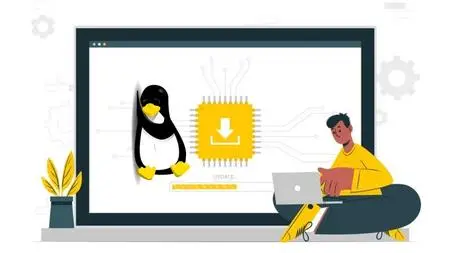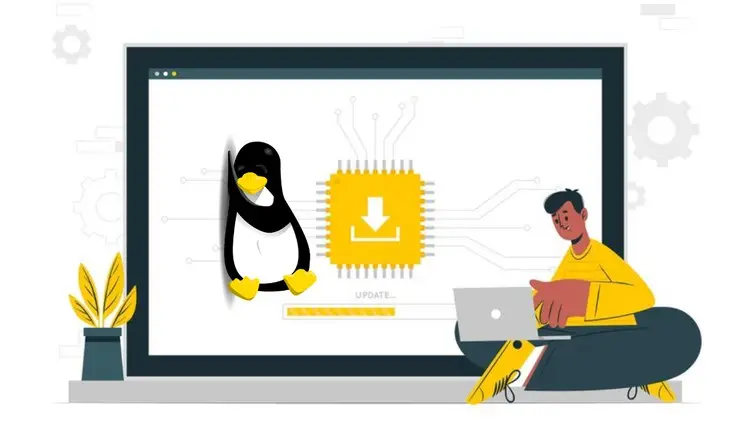Linux and Embedded Linux
Duration: 9h 56m | .MP4 1280x720, 30 fps(r) | AAC, 44100 Hz, 2ch | 3.14 GB
Genre: eLearning | Language: English
Duration: 9h 56m | .MP4 1280x720, 30 fps(r) | AAC, 44100 Hz, 2ch | 3.14 GB
Genre: eLearning | Language: English
Embedded Linux - Kernel & Device Driver Development, Embedded Linux Multimedia, ARM, RT Linux, TI OMAP Processors, more.
What you'll learn:
Learn Linux and Embedded Linux concepts
Understand Linux Ecology
Deep-dive into Embedded Linux - Kernel and Device Driver Development
Define Linux File System Hierarchy Standards
Understand Embedded Linux Audio and Multimedia
Apply Java for Embedded Linux Systems
Learn about Linux USB Drivers, PDAs and hand-held devices
Grasp ARM Linux specifics and RT Linux
Learn the GNU Linux Command Line interface and frequently used Linux commands
Requirements:
Enthusiasm and determination to make your mark on the world!
Description:
A warm welcome to the Linux and Embedded Linux course by Uplatz.
What is Embedded Linux?
Embedded Linux is a form of Linux kernel which is specifically designed for embedded systems & devices. For e.g. Android, the most popular mobile operating system, is a type of embedded Linux customized for smartphones. Essentially, Embedded Linux is specifically customized for embedded systems. Therefore it is has a much smaller size, requires less processing power and has minimal features. Based on the requirements of the underlying embedded system, the Linux kernel is modified and optimized as an embedded Linux version.
An embedded system is a computer that serves a dedicated purpose involving computation for real-time operations. Embedded systems are all around us in consumer, industrial, telecommunication and even medical applications.
Embedded systems can have varying degrees of complexity, ranging from a simple thermometer to modern smartphones. Today, the demand for capable embedded systems are on the rise as modern applications such as machine learning make their way into consumer devices.
A kernel is the core of an operating system that manages the operations of the computer and its hardware, especially the memory and CPU. In other words, the kernel is the interface between software and hardware.
Why Embedded Linux?
Embedded Linux provides flexible, low-cost, open-source environment and gets adapted to specific-purpose microprocessors. Compared to proprietary embedded operating systems, Linux allows multiple software, development, and support vendors; it has a stable kernel and provides the ability to read, modify, and redistribute source code.
Operating systems based on the Linux kernel are used in embedded systems such as consumer electronics (i.e. set-top boxes, smart TVs, personal video recorders (PVRs), in-vehicle infotainment (IVI), networking equipment (such as routers, switches, wireless access points (WAPs) or wireless routers), machine control, industrial automation, navigation equipment, spacecraft flight software, and medical instruments in general).
Because of their versatility, operating systems based on the Linux kernel can be also found in mobile devices that are actually touchscreen-based embedded devices, such as smartphones and tablets, together with personal digital assistants (PDAs) and portable media players that also include a touchscreen. This is a challenge for most learners because their computer experience is mainly based on GUI (Graphical user interface) based interaction with the machine and high-level programming on the one hand and low-level programming of small microcontrollers on the other hand while the concept of command line interfaces is widely unknown.
Linux will be a major player in the embedded OS landscape. It emerges as the platform of choice for many vendors of various sorts of equipment. Traditionally, embedded systems are based on proprietary kernels and small microcontrollers but the developments in CMOS technology constantly lowers the price difference between 8-bit controllers and low-power implementations of 32-bit general purpose CPUs. In the same vein, the manufacturers and vendors of embedded systems want to put their equipment over the internet thus requiring TCP/IP and multitasking. Implementing and supporting applications and kernels of this degree of complexity with proprietary software incurs a high cost. Hence, the incentive to replace microcontrollers with general purpose CPUs and in-house developed kernels with a standard operating system is growing rapidly. Thus the ever growing need of Linux kernel.
Benefits of using Linux for Embedded Systems
Design of communication and application architectures supporting a distributed system in which individual components may drop out and reenter without prior notification
Design of services that fits a future home and workplace filled with communicating smart equipment
Mission critical embedded applications need to run efficiently and effectively, thus Linux
This Embedded Linux course explains how embedded Linux systems are developed along with an exploration of the hardware and software ecosystems. The course covers different aspects of Linux and Embedded Linux concepts, command line interfaces, Linux ecology, embedded Linux kernel and device driver development, embedded Linux audio and multimedia, USB drivers. The Linux and Embedded Linux course also explains how to use java for embedded Linux systems, IT OMAP processors, ARM and RT Linux besides covering the new aspects of Linux 2.6, frequently used Linux commands, and more.
Linux and Embedded Linux - Course Syllabus
Linux - Unix - GNU Linux Command Line
Linux and Ecology
Embedded Linux - Kernel and Device Driver Development
Linux File System Hierarchy Standard
Embedded Linux Audio
Multimedia in Embedded Linux Systems
Linux USB Drivers
Linux for PDA
Java for Embedded Linux Systems
Linux for TI OMAP Processors
ARM Linux Specifics
What is new in Linux 2.6
Frequently used Linux Commands
RT Linux
Who this course is for:
Embedded Linux Engineers
Embedded Linux Programmers with OPEN GL and C++ Skills
Newbies and Beginners interested in designing Embedded Systems
Linux Administrators
Anyone aspiring for a career in Linux and Embedded Linux Systems
Embedded Software Engineers
Unix & Linux Engineers
Linux Infrastructure Engineers
Senior Engineers - Infrastructure Operations - Linux
More Info



